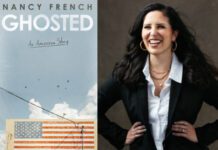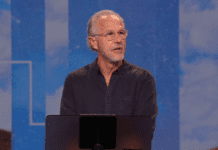Like many houses of worship, Friendswood offered online services as an alternative to in-person attendance. He considers them a mixed blessing — a plus for elderly congregation members worried about their health, but a disincentive for others who are increasingly disconnected from the church.
“They’ve become spectators,” Bass said.
At Temple Beth El in Charlotte, North Carolina, Rabbi Asher Knight was elated that recent Hannukah celebrations drew about 300 people in person. Overall, attendance now is roughly half of pre-pandemic levels, but an improvement over periods earlier this year when only a handful of worshippers appeared.
“It was demoralizing and painful to lead worship with virtually no one present,” he said. “But in October and November, people got the booster and their children got vaccinated and they slowly started coming back.”
In September, amid a surge in COVID cases, Temple Judea in Coral Gables, Florida, observed the Jewish High Holy Days with no in-person services. So the sanctuary wouldn’t look so empty for online services, Rabbi Judith Siegal and her staff filled it with cardboard cutouts of congregation members, including children and pets.
In-person worship has now resumed, and the range of weekly attendance — 75 to 125 people — is close to pre-pandemic levels.
“We’re still wearing masks, and the seating is still spread out,” Siegal said. “But our members love it.”
Among Christians, the option of worshipping online has been embraced by many evangelical Protestants, according to the AP-NORC poll. About 3 in 10 have livestreamed services at least weekly in recent months, compared with about 1 in 10 Catholics or mainline Protestants.
Three-quarters of evangelical Protestants say they pray privately at least weekly, compared with roughly half of mainline Protestants and Catholics, the poll found.
Roughly a quarter of evangelical Protestants say they’ve recently talked by phone or video conference with a religious or spiritual leader at least a few times a month, compared with about 1 in 10 mainline Protestants and Catholics.
Some faith leaders, such as Meredith Mills, see some positives, such as more energy in the church, even with fewer worshippers.
“The ones showing up right now are the people who really want to be there,” she said. “There’s a lot of joy in the room Sunday mornings. It’s one of the reasons that, despite everything, I still love my job.”
___
The AP-NORC poll of 1,083 adults was conducted Oct. 21-25 using a sample designed to be representative of U.S. population. The margin of sampling error for all respondents is plus or minus 4 percentage points.
___
Associated Press religion coverage receives support from the Lilly Endowment through The Conversation U.S. The AP is solely responsible for this content.
This article originally appeared here.











